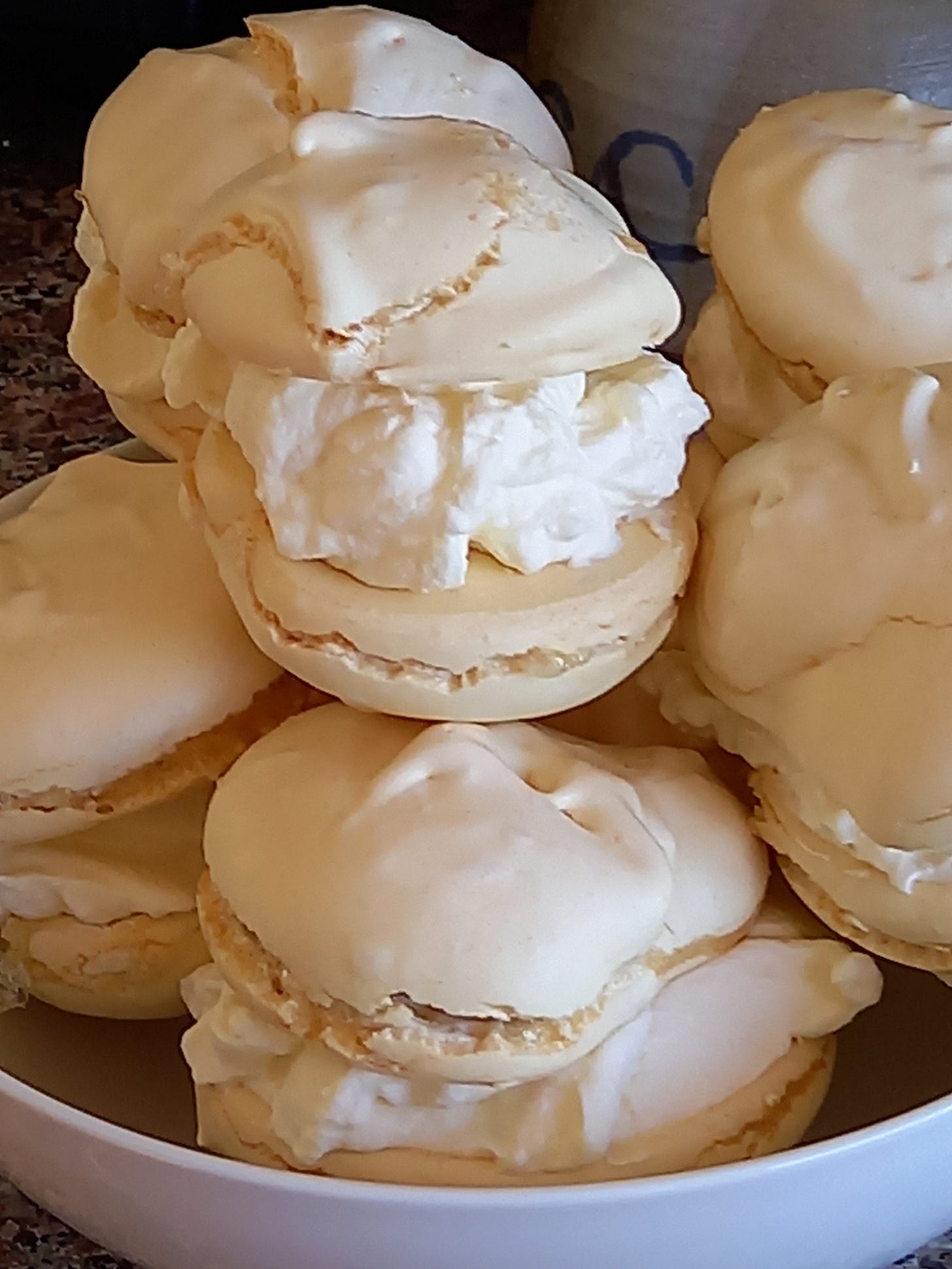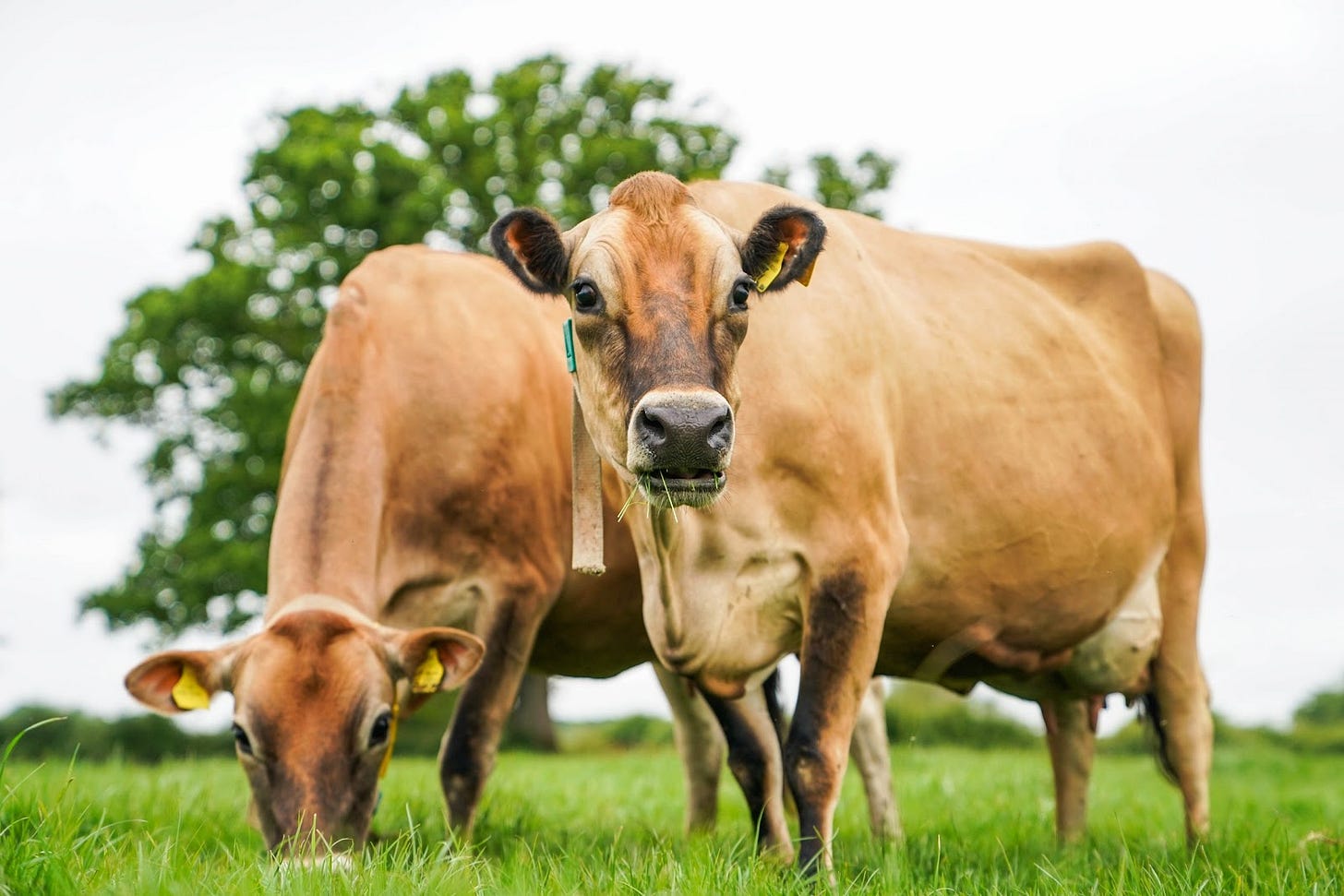Crop of the cream - the best of dairy
A recipe for home-made Devonshire cream

‘La crème de la crème’ seems to me a thoroughly inapposite French expression. After struggling in France to produce with that French dairy product what I create with ease when cooking with English cream, I can tell you French cream is far from being the bees’ knees. Their talented professional patissiers may conjure up the most extraordinary confections of mousses and featherweight pastries under clouds of cream but it’s a challenge that's beyond me. And American cream is little better.
Cream is as complicated as it is old. That higher-fat layer which floats to the top of milk is thought to have been known in the Palaeolithic era of animal husbandry. It’s said (though I can’t establish by whom) to have been a popular ingredient with the Pharaohs, then later the Celts and Vikings. There are, though, established records of its 9th century AD use by the Romans.
Despite my disparaging view of their cream, it was the French who took up with it in the biggest way. An 11th French century recipe for flan gives cream, not milk, as an ingredient for that custard tart thought to have been devised by the Romans to use up surplus eggs once they began to breed chickens. By the 15th century, being a pastry chef had become an honourable French profession, with all manner of cream-based confections created for the nobility. The description “crème fouettée” for whipped cream is recorded in France in 1629, then in England in 1673. By the 19th century, Antonin Carême was devising technically challenging monumental cakes covered in rococo-like decorations in cream, with Escoffier following on his tail. It was Gaston Lenôtre in the mid-20th century who modernised and lightened classic French patisserie, ignoring flour-based crème pâtissière in favour of airy whipped creams and cream-based fruit mousses.
In the exuberantly legislative French way of things, their ‘crème’ has been defined by decree - Number 80-313, of 23rd April, 1980. This establishes the minimum amount of butterfat content that allows for the use of the word: 12 percent. Which, frankly, is paltry. American cream isn’t much better.
In case you should ever plan to follow a recipe in France or the US that calls for cream, let me explain the nuances between the myriad types, because they affect your cooking. Hint: Keep a focus on the butterfat percentages. They are key.
In France, crème fleurette is the cream most commonly cooked with, a liquid cream with a 30 percent butterfat content. Crème entière liquide has a butterfat content between 22 and 40 percent. (It has also been Ultra Heat Treated - UHT sterilised.)
Crème fraiche has been soured using bacteria in the form of a starter culture, to slightly thicken and acidify it. The name can only be applied to pasteurised creams created on the production site within 24 hours of pasteurisation, and having 30 to 40 percent butterfat.
Crème fraîche liquide is a pasteurised cream, usually 30 percent butterfat but up to 40 percent. Because it doesn’t curdle, it is the cream most commonly used to make hot savoury sauces as well as in puddings and ganaches, and to create crème Chantilly.
None of these creams have added lactic ferments, additives which make them heavier, in case you're curious. But crème crue maturée (raw cream) with 30 to 40 percent butterfat does. This cream generally comes direct from the farm for local sale only. It is never pasteurised nor sterilised. Crème entière épaisse, too, has lactic ferments added. With 22 to 40 percent butterfat, this cream has also been UHT sterilised, which is why it can’t legally be called ‘fraîche’. However, crème fraîche épaisse can because it has only been pasteurised. (Vous me suivez toujours bien? Still with me here?) This is the cream that works best in reductions and liaisons as it doesn’t split and is your secret ingredient for the very best quiche texture. There’s a diet version with the word ‘legère’ inserted, at 12 to 21 percent butterfat but usually clocking in at 15 percent. Crème aigre, which I rarely ever see, is close to American sour cream, with a more acidic taste and 16 to 21 percent butterfat.
Moving across the pond, American heavy cream has a butterfat content of at least 36 percent and beats into a whipped cream with stable peaks whereas whipping cream, between 30 and 36 percent, whips only into soft peaks. This is the cream most commonly used in sauces, soups and for dolloping. Light or table cream, also used in sauces, in general cooking, and added to coffee, has a butterfat content of 18 to 30 percent. Half and half is equal parts milk and light cream, with a butterfat content of 10.5 to 18 percent.
So now we have all that under our belts, let me introduce you to what I’d really call cream: English cream.
You will immediately understand why I’ve so scrupulously and rather tediously given you all those butterfat percentages if I tell you that our unmatched hero, clotted cream, clocks in at 55 percent butterfat. This cream is that unctuous almost-solid that divides people between those who apply it first to their scones and those who smear it after a liberal slick of strawberry jam. Rip the lid off a pot of clotted cream and turn it upside down and not one single drop will detach itself to the floor.
Extra thick double cream, usually spooned directly onto puddings, logs in at 48 percent, as does double cream, the cream most commonly whipped up to wedge one meringue against another - in just one heavenly example.
Whipping cream, at 35 percent, does the same but more lightly. Single cream, at 18 percent, is for pouring over puddings or for cooking into sauces, and adding to coffee. Half cream at 12 percent is the nonsense sometimes used in cocktails if that kind of libation is your thing.
Then there’s Jersey cream, a golden cream at 35 to 45 percent butterfat from Jersey cows, which you can get a version of in the US from Vermont cows.
If you can’t get hold of decent cream but have access to good unpasteurised milk and cream, you can make your own thick Devonshire cream, perfect for summer berries, scones and Summer Pudding by following this recipe (in italics with my adds in plain) of Lady Shaftesbury, wife of British Tory politician, philanthropist and social reformer, Anthony Ashley-Cooper, 7th Earl of Shaftesbury, written around 1862.
2 pints of whole milk
1 pint of cream
Mix together and let sit for 6 hours (on the counter for the cream to rise to the top of the milk). Put the bowl in a pan of water on the stove on the lowest heat, topping up the water level if necessary for 4 hours until the cream cracks. Then let it stand for one night when the cream is ready for skimming (off the top. Use the remaining whey for cooking).





Very interesting. Thank you.
Seriously yummy looking meringues!